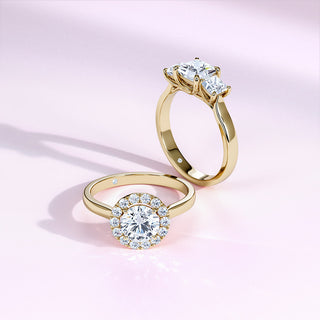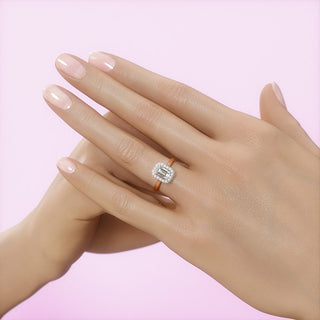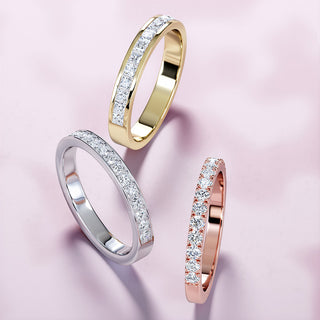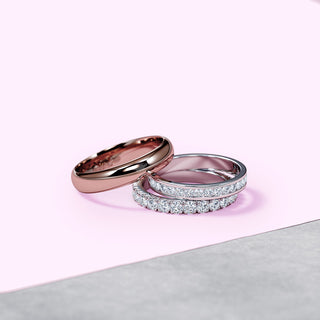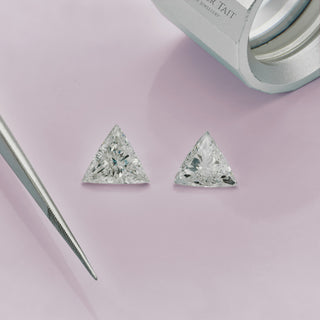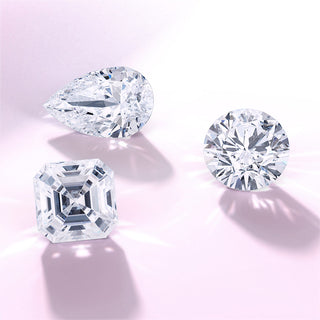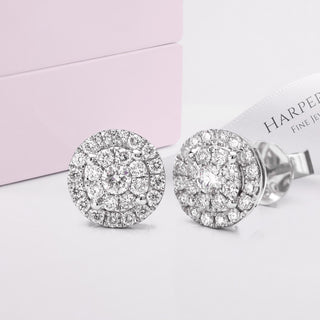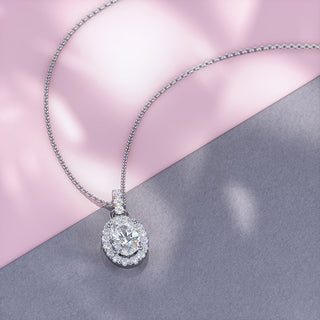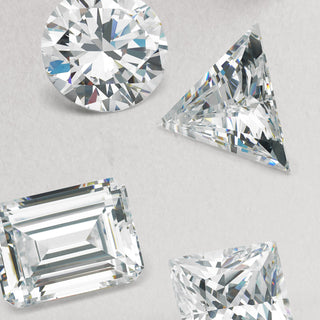What is a Princess Diamond?
A princess diamond is a square cut with brilliant facets, also technically known as a ‘Square Modified Brilliant Cut’. Designed between the 1960s and 1980s, the princess cut as we know it is a relatively new stone. Nonetheless, it has become one of the most popular of the fancy shapes. With roots in the 14th century, the princess diamond began life as the square shaped “french cut”. When cutting and design technology allowed greater numbers and accuracy of facets, the modern princess cut got its sparkle.

How Many Facets does a Princess Diamond have?
The princess diamond has 50 - 58 facets, depending on how it has been cut. Thanks to its geometry, the brilliant cut faceting looks a little different on a princess compared to other brilliant cut diamonds like a round, glittering with an angular pattern.
What Makes a Princess Diamond Special?
It’s little surprise a princess diamond has become so popular, so quickly. The shape shares some of the most attractive qualities of a round brilliant cut, with facets designed for incredible sparkle. However the geometry and sharp lines of the princess create an entirely different look, providing sleek and modern style unlike almost any other cut. Other angular diamond cuts like asscher and emerald employ step cut facets, which maximise clarity rather than sparkle. The princess is set apart in combining geometry with brilliance
How do you Know if a Princess Diamond is Well Cut?
Of the four Cs, diamond cut is one of the most important. But unlike round diamonds there is no specific cute grade for princess diamonds.
It leaves it to diamond experts to determine the most beautiful stones based on a balance of factors - the symmetry of the facets, the quality of the polishing, and the balance of size and depth.

First we consider the visual impact of the stone - how does the fire, brightness, and scintillation appear? Second, the design - how well proportioned is the diamond? Finally, we look at the craftsmanship - how skillfully has the diamond been cut and polished? While princess stones are not given a formal cut grading, there are some suggested parameters for a well-cut stone, including;
Length to width ratio: The length to width ratio of a diamond measures how proportional it is. Diamonds which fall within these parameters will be most pleasing to the eye, with a more distinct and even shape. Look for a princess diamond with a length to width ratio of 1.00 to 1.03 to ensure your diamond looks perfectly square in any setting style.
Table: The table is the largest, central facet of a stone. The table needs to be large enough to let lots of light into the diamond, but not so large that the upper facets don’t have room to sparkle. Look for a princess diamond with a table ratio between 64 - 75%
Depth: A diamond’s depth is the top-to-bottom measurement of a diamond, from its table to culet. The depth ratio compares this measurement with the overall width of the stone. The depth affects the visual balance of a diamond and its brilliance. If a stone is too shallow or deep the light will not refract properly, escaping through the base of the diamond instead of the top. Look for a princess diamond with a depth ratio between 64 - 74%.
We also suggest seeking princess diamonds with a depth ratio less than or equal to the table ratio.
Choosing a Diamond Cut Grade
Princess diamonds are stunning in a wide range of ring and jewellery styles, so consider the kind of design you’d love for your piece to help choose the perfect diamond. Princess diamonds are rarely exactly square, but a slight variation will appear perfect to the naked eye.
However, if your heart is set on a compass setting, where the points of the stone are rotated 45degrees to point upwards, you will need a stone with excellent symmetry. An off-square stone will be obvious when viewed at this angle. If in doubt, just ask - our expert team will help you source the perfect stone. A princess diamond’s brilliant-cut facets will disguise inclusions better than a step-cut stone such as an asscher or emerald, but avoid inclusions at the corners, as they can weaken an already delicate area.
Choosing a Princess Diamond Colour
Like so much about choosing a diamond, colour grade comes down to personal preference. Colour is graded by letters, with the scale starting at D. A colourless diamond grade is anything from grades D to F.
Most diamond lovers prefer the cool, white hue of a ‘colourless’ diamond, which is why these shades are so highly prized. For grades G and below the diamond colour gets progressively warmer, beginning to draw tones of yellow or brown. Some customers like these warmer shades, or find they can’t easily tell the difference in a yellow or rose gold ring.
If you have chosen a platinum or white gold setting, the difference between the white metal and a warmer colour stone will be more obvious, so we advise going no lower than a grade F.
Choosing the Clarity of a Princess Diamond
Diamond clarity varies greatly, from perfectly clean stones to those with easily visible inclusions. Truly flawless diamonds are incredibly rare. Thanks to the dizzying sparkle of a princess diamond, small inclusions are not as visible to the naked eye. It means you can choose a slightly included grade and still enjoy an eye-clean diamond. Which is to say, you will not notice any flaws without magnification.
We advise a grade between SI1 and VS2 for brilliant cut stones under 3.00ct. At these grades you will not notice any inclusions - only incredible sparkle! For very large stones, a higher clarity may be advised. Please contact us and we can talk through your options.

Is a Princess Cut the Diamond for You?
You adore thoroughly modern style and love designs with a sleek and elegant geometry. But you’re not prepared to compromise on sparkle, desiring the incomparable fire and scintillation of a brilliant cut. Whether in a minimalist solitaire or a glittering diamond-set mount, a princess diamond gives you both. Princess diamonds are also a popular choice for wedding rings, sleek and sparkling in a channel setting.


